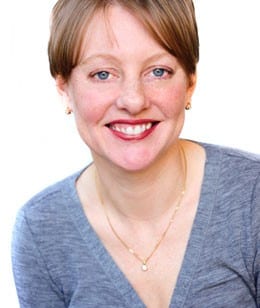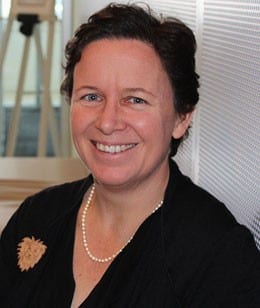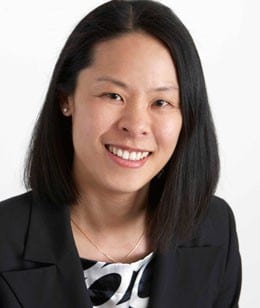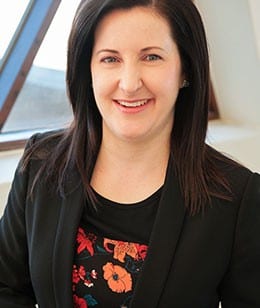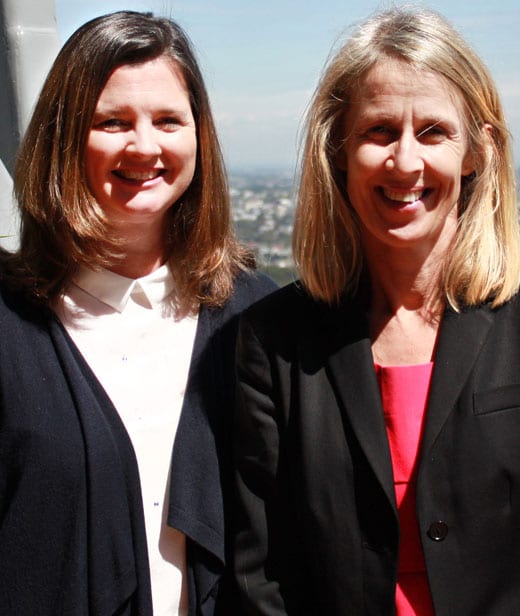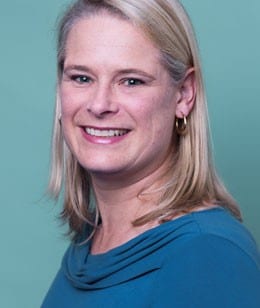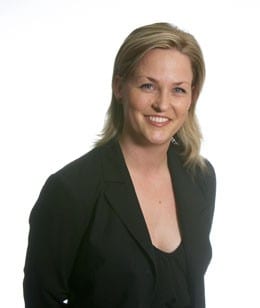ProfessionalMums.net and Women’s Agenda have compiled a list of the country’s most powerful part-time workers to show that influential careers can be flexible.
This is our inaugural Part-Time Power List, and it showcases the wide range of working arrangements some of the country’s most senior leaders are using, proving you don’t have to work “full-time in the office” to hold leadership positions.
See Jane Lindhe’s introduction to the list, including how it was researched, here.
Check out the women and men who made the list below.
Alison Cunniffe
Organisation: AMP Capital Investors & Clovelly Community Bank
Position: ESG and Sustainability Manager, Infrastructure & Director
Working arrangement: Currently works 22.5 hours a week. Flexible days and hours (self-determined) and able to work from home or at the office. Flexibility is required for travelling and is supported by partner. Works three hours a week for Clovelly Community Bank and takes part in monthly board meetings.
Career path: Cunniffe’s expertise in sustainability and community investment have becoming increasingly important in financial markets (from retail banking through to institutional investment), which have helped her accelerate her career.
What makes this person powerful: The ability to cross promote financial services and sustainability expertise across formal working engagements and informal community initiative participation (including school, sporting and community sustainability). Also, it’s her passion to share the commercial virtues of sustainability to engage stakeholders that may have not previously been open to dialogue.
Fiona Osler
Organisation: Alinta Energy
Position: Group manager talent
Working arrangement: Four days a week, with flexibility around working from home and family commitments
Career path: Osler has a background in finance and investor relations, as well as equity markets as an analyst at investment banks, and now works in people and culture.
What makes this person powerful: Specialised knowledge and experience.
Jane Latimer
Organisation: The George Institute for Global Health, Sydney Medical School, University of Sydney
Position: Professor and Principal Research Fellow
Working arrangement: A 70% fractional basis, having predominantly worked 40-60% while her children were young.
Career path: Latimer has extensive public health and private practice physiotherapy experience. On completion of her PhD, she worked as a researcher at The George Institute of Health (2008) before being promoted to Professor in the medicine faculty at The University of Sydney.
What makes this person powerful: Latimer has an international reputation in musculoskeletal disease and has completed extensive research in the area of fetal alcohol spectrum disorders. “All this has been possible working part-time. Had my research position been offered on a full-time basis only I would have had to reconsider my choice of career,” Latimer says.
Lisa Tuffs & Sarah Goss
Organisation: Ericsson
Position: Principal Engagement Manager, Industry & Society, Ericsson Australia & New Zealand (job share)
Working arrangement: Three days at the office, and working from home when required.
Career path: Both Tuffs and Goss have taken part in leadership development programs, choosing to direct their careers towards roles that have sales and delivery responsibility rather than functional ones (eg: Head of Communications or Head of Marketing).
What makes these people powerful: The purpose of this role is to identify, qualify and seed new business growth areas for Ericsson. They have to work across multiple stakeholders including external ones such as customers, industry bodies, third party partners and internal ones at a local, regional and global level to secure funding and support. It is a strategic role and requires strong interpersonal skills and the ability to effectively influence.
Lisa and Sarah were nominated by Amanda Milledge, who is currently researching new ways of working. She believes the terms ‘full-time’ and ‘part-time’ will become old-hat since it’s not how long you take but what you contribute that matters.
Jane Danziger
Organisation: The Boston Consulting Group
Position: Partner
Working arrangement: Two days spread over four or five days, with a mix of working from home, the office and clients’ offices. Flexible model, changing every week to fit work and home commitments. Danziger has worked part-time for over 8 years, ranging from 30% to 80% capacity under many different models (4-5 short days, fixed days off, variable hours/days, working from home).
Career path: Danziger started her career in BCG’s Sydney office as an Associate in 1997. She worked for British Airways’ Strategic Development Group for 12 months before completing her MBA at Harvard Business School in 2002. Danziger spent four years in BCG’s New York office before returning in 2008 to Sydney where she was elected partner in 2012. Danziger leads BCGs Australian Marketing and Sales Practice.
What makes this person powerful: She’s an engaging and inclusive leader; hugely respected internally and with clients alike.
- Dylan Smith
Organisation: Fremantle Foundation
Position: Executive Officer
Working arrangement: Three days per week over 4 days in the office, so he can do the school run every day and have one day at home with his youngest child.
Career path: Smith has grown the Fremantle Foundation over four years to become a leading philanthropic organisation in WA, donating hundreds of thousands of dollars to charities every year.
What makes this person powerful: Smith is exceptional at connecting people. His drive and determination for philanthropy is contagious and he is inspiring people to give every day.
-
Sarah Falzarano
Organisation: Musica Viva Australia
Position: Chief Financial Officer
Working arrangement: Four days a week, including flexible arrangements from home.
Career path: Musica Viva is the world’s largest presenter of chamber music and a member of the Major Performing Arts group. At just 41, Falzarano has been CFO of the company for a decade. Prior to joining, Falzarano was a corporate accountant working for Deloitte. She moved to Australia from the UK with her young son and has flourished in the not-for-profit sector.
What makes this person powerful: Under Falrzarano’s financial leadership, Musica Viva is one of the strongest and most sustainable arts companies in Australia. In 2014/15 it is expected to record its largest surplus in the company’s 70-year history.
Kate Latanis
Organisation: Fair Work Ombudsman
Position: Acting Director
Working arrangement: Four days a week, with flexibility to work at home when needed.
Comments on career path: As well as being the director of a National Contact Centre, Latanis also volunteers as president of a childcare centre.
What makes this person powerful: As well as her director role in a major organisation, she’s proof that it isn’t necessary to work in a traditional full time role in order to have a fulfilling career and access to promotion opportunities
Nicolette Rubinsztein
Organisation: Commonwealth Bank/Colonial First State
Position: General Manager, Retirement & Advocacy
Working arrangement: Five days a week from 8am to 2:30pm
Career path: Rubinsztein as previously General Manager, Strategy at Commonwealth Bank/Colonial First State. She has worked part-time for over 10 years as a general manager and during that time has had three children.
What makes this person powerful: As well as her leadership role at the bank, Rubinsztein is on the board of the Association of Super Funds of Australia (ASFA), the peak body for superannuation in Australian.
Brodie Woodland
Organisation: Public Transport Victoria
Position: Director Governance and Legal
Working arrangement: Compressed work-week (full-time in 4 days)
Career path: Woodland has been able to grow and develop her career while working part-time and then in flexible arrangements. She returned to work part-time after having children. This evolved to a compressed work-week. “Working flexibly has been challenging at times, but I’ve been able to have demanding roles, responsibility, and career growth,” she says. “I moved to my current role (executive role, leading legal, governance and risk functions) while continuing to work flexibly. I’ve had great support—and a few role models—and I’m keen to speak out about my experience to showcase what’s possible.”
What makes this person powerful: Her decision-making capacity, and determination to show that working in a very senior role for a national organisation is possible through a flexible working arrangement.
-
Theresa Mason
Organisation: Teachers Mutual Bank
Position: Chief Sales and Marketing Officer
Working arrangement: Mason works regularly from her home on the NSW Central Coast when not in the Sydney office.
“It doesn’t matter where the work is conducted, as long as objectives are set and goals are met. At this level you would burn yourself out working in a traditional manner when you take into account travel time and after hour events etc,” Mason says. “Technology advancements have meant this is possible. I have a fully integrated work station. I can conduct meetings anywhere with video…we collaborate daily. I am also a member of a club with accommodation facilities, so I stay in the city to work and attend meetings on occasion.”
What makes this person powerful: An executive since 2005, Mason is responsible for strategic marketing and sales for one of Australia’s largest mutual banks. Mason was responsible for establishing Teachers Mutual Bank’s broker distribution model, which generated $93 million worth of home loan transactions in the first 4 months. Mason’s expansion of the bank’s sales distribution channels combined with market leading product development has ensured the bank achieves above system loan growth year on year.
Saffron Solomon & Alison ClarkeOrganisation: AFG
Position: Marketing Manager
Working arrangement: Solomon and Clarke job share with Solomon working three days a week in Perth and Melbourne-based Clarke working two days in the office and one school–hours day at home. The two previously job shared a senior position at insurance company SJO.
Career path: After having children Solomon didn’t want to sacrifice her career goals by taking a more junior, part-time role. Clarke meanwhile was returning from maternity leave to her corporate communications role at SJO and wanted to only work 2-3 days a week. She proposed a job-share arrangement to her boss, who agreed as long as Clarke interviewed and found the candidate herself. “I was in the same position and still wanted a meaty, senior role and part time positions didn’t cut it for me,” Solomon says. “This was the perfect arrangement, as we have different skill sets. The employer basically gets two employees for one, and we get the role we want.” Five years ago the pair decided to leave SJIO after a corporate restructure and applied for a role at AFG as a “two-for-one deal”. “We pitched it with a one-pager, quite humorous proposition,” she says. “They had some reservations, but they agreed to employ us.”
What makes these people powerful: Apart from the job which is marketing a technology system used by 1100 broker businesses and dealing with nine staff, they successfully applied for a new role as job-sharers. Normally job share arrangements are brokered with a current employer rather than a new employer.
Christine Linden
Organisation: ANZ
Position: Head of Small Business Banking (Victoria and Tasmania)
Working arrangements: Linden, who manages a team of about 180 people, has flexible working hours, often starting later in the day or finishing early and she has one day a week at home in order to care for her husband, who was seriously injured in a push bike accident. Linden’s husband requires full-time care, which means when she is in the office carers need to be in her home to support him. “What has happened with our lives over the last few years has helped me to think about work and home and what is important for me to do. I wanted to be able to care for my husband, but I still wanted a job that was interesting and fulfilling.” In addition to flexibility around hours and time spent in the office, Linden has eight weeks of annual leave, which she often uses to schedule doctors appointments around.
Comments on career: Linden was promoted to her senior role after her husband’s accident. Prior to taking on her current role, she was a people leader at the bank and after the accident took 6 months off work to care for him. “I spend lots of time planning what I need and what I can and can’t commit to in order to make this work for everyone,” she says. “It’s about being upfront and honest – it makes the relationship [with an employer] much better and helps me to plan.” “Flexibility is not just about people with kids or only women in the workplace. In fact, having an interest outside of work often makes for a more interesting and more engaged and satisfied employee,” Linden says.
Why is this person powerful: Adversity does not necessarily mean the end of a career.
Kiri Parr
Organisation: Arup Title: Regional Legal Counsel
Working arrangements: Part-time for the last 9 years, ranging from 3 days per week to 4 days a week. Parr has always adopted flexible working arrangements, making changes every 12 to 18 months to suit the changes within her family.
Career path: 10 years in private practice (including Allens and Blakes) and joined Arup 9 years ago.
Additional comments: “It is very easy to work full time, but I am keen to maintain more.”
Tim Thurman
Position: Chief Information Officer
Company: Australian Securities Exchange
Working arrangements: Thurman works from home once a week and maintains flexible hours each day to suit work needs and family life (e.g. taking children to school). Thurman also makes use of his commute to and from work, using remote access to check emails and carry out tasks. In order to make his arrangement work, he dials into meetings where practical and does a lot of reading (such as board papers) at home. Thurman doesn’t have a home-office as such, preferring to work from his dining table or outdoor setting (he uses his phone, Bluetooth and other devises to maximise his working from home time).
Career path: Thurman is a senior IT executive with more than 25 years of technical and project management experience in building, deploying and supporting high availability low-latency financial applications and infrastructure with exchanges, alternative trading systems and investment banks. As CIO of the ASX, Turman is responsible for providing strategic IT leadership, and oversees the development and delivery of IT services and new technologies. He has held senior positions with Credit Suisse Canada, Alpha Trading Systems, TD Securities (Newcrest), TMX Group, and IBM Global Services.
What makes this person powerful: With more than two decades’ IT leadership experience, Thurman has specialised knowledge of high-level, corporate management and has overseen the development of technology at many large corporations. Thurman has managed to climb the corporate ladder while maintaining a flexible work life.
Kate Graham
Organisation: ASX
Position: General Manager, Project Delivery
Working arrangements: Three days (7am-4pm) and two days (9am-6pm), with home duties shared with her husband.
Career path: After two children in short succession, Graham was out of the workforce for two years. She came back in a 3-day a week role as a contractor and then moved up to a four-day a week role. She started at the ASX in September 2012.
Belinda Townsend
Organisation: EY
Title: Partner
Working arrangements: Flexible working arrangement – 3 days per week
Career path: Townsend Began her career as a lawyer at a small boutique firm in Brisbane. She joined EY overseas working in various different EY offices in the former Soviet Union specialising in advising multinational oil and gas companies on their international tax affairs. When she returned to Sydney, she completed her Masters of Taxation at Sydney University. For the past decade Townsend, a partner at EY, has worked from the company’s Perth office.
Townsend was promoted from EY director to partner while on maternity leave with her first child in 2008. She took another period of maternity leave to care for her second child in 2012 and continues to work flexibility while progressing her career.
Joanne Gorton
Organisation: PricewaterhouseCoopers
Position: Partner
Working arrangements: Three days in the office and one day from home. Additional flexibility depending on work and family commitments.
Career path: Gorton began working at 18 as a trainee accountant, working full time and studying part time for two years, followed by two years’ of full time study at university while completing vacation work at PwC. Specialising in financial services, Gorton has been the leading partner on the audit of many clients in this space. “The nature of my role requires long hours at times, but I balance this with shorter hours at other times of the year, to ensure that overall balance is maintained between my personal and work commitments,” she says. “Having great support at home is key to the success of these arrangements.”
What makes this person powerful: She’s a lead audit partner at a big four firm working four days a week.
Paul Conroy & Jill Murray (husband and wife)
Orginisations: Conroy works in the media industry and Murray works for engineering firm Hyder Consulting
Positions: Paul Conroy is a Broadcast Engineer and Jill Murray is the Client, Marketing & Communications manager for Hyder Consulting’s Australian business.
Working arrangement: Both have a flexible work place arrangement. Conroy works a full time week on a rotating roster from Wednesday night to Sundays; Murray manages a full time workload across four days. Between them they care for their son, Ted.
Career path: Both wanted to find a way to work with their employers to meet their needs, but to have some balance so that we could both spend time with their son. Both have 15+ years in their fields.
How are these people powerful? Both are specialists in their chosen fields, with niche knowledge and over 15 years experience. They have furthered their careers while ensuring their family comes first.
Jane Eccleston & Kate O’Rourke
Organisation: ASIC
Position: Senior Executive Leaders – Corporations team. This team is responsible for ASIC’s work relating to corporations, including mergers & acquisitions, schemes of arrangement, fundraisings, continuous disclosure, corporate governance and financial reporting.
Working arrangements: Eccleston and O’Rourke job-share the role of Senior Executive Leader, Corporations. Jane works Monday-Wednesday, and Kate works Wednesday-Friday. They have job-shared this role since December 2010. Before this, they job-shared as senior managers within the team and were promoted together.
Career paths: Prior to joining ASIC in 2002, Eccleston was a senior associate with Mallesons Stephen Jaques and also worked in an in-house role at Westpac. O’Rourke was previously an associate with Sullivan & Cromwell in both its New York and Sydney offices.
Why are these people powerful: Eccleston and O’Rouke hold an extremely senior role with Australia’s securities watch dog, overseeing some of its fundamental regulatory priorities including M&A activity, corporate governance and financial reporting. These functions are crucial for the smooth running of the economy.
Majella Pollard
Organisation: Clayton Utz
Title: Partner (Public Sector practice)
Working arrangements: 3.5 days a week, with additional flexibility as needed.
Career path: She spent 18 months doing articles of clerkship at Allens and became an associate to the now Honourable Justice Kiefel for 12 months. After working at Crown Law for over 8 years, she started at Clayton Utz and has been with the firm for 10.5 years, working part-time since 2003.
Why is this person powerful: A specialist in her field and highly regarded among peers
Jane Scholes & Tanya Carroll
Company: Coca Cola Amatil
Title: Head of marketing services and sponsorship
Working arrangements: Job share – one of them is in the office at any one time with the exception of Fridays where they are at home
Career Path: Jane has been with CCA for 10 years and previous roles before she had three children included heading up its non-grocery business in NSW. She now has three children the youngest of which is 11. She took maternity leave of up to a year with each child and in between came back part-time. After her last child her and Carroll proposed a job-share agreement. “Personally I didn’t feel that part-time allowed me to hold jobs that I was interested in,” says Scholes. They originally proposed to the head of marketing that they do the role of national sponsorship manager as a job share and recently they have been promoted to their current role.
What makes them powerful: Looking after a team of seven and pioneered job sharing in CCA.
Deborah Smee
Company: Hyder Consulting
Position: Deborah is a structural engineer and is a Technical Director in Hyder’s Property Team.
Current working arrangement: Deborah works over 3-4 days per week
Career path: Smee has 20 years’ experience in engineering. After having her first child she decided to find a flexible working arrangement in order to spend more time with her family. While working 3-4 days a week she was promoted from Associate Director to Director, showing it is possible to work part-time and also still progress your career.
Why is this person powerful? Smee was one of the first senior female engineers at Hyder to go part-time and often gets approached by colleagues for advice when they are considering their flexible working arrangements. “I guess I have led the way for others to be confident in asking the question around flexibility and to find a solution that works for them and their employer,” she says.
Karlie Mucjanko
Title: General Manager—Grower and External Relations
Company: The CBH Group
Working arrangement: Mucjanko works a nine day fortnight and has a flexible schedule with the ability to work from home as needed. She has two young boys, making flexible work arrangements crucial to achieve work-life balance.
Career path: She sits on the executive committee of the CBH Group as general manager of grower and external relations and is responsible for corporate affairs, external relations and the grower services call centre. Mucjanko, who has worked for CBH for nine years, previously worked for the Kondinin Group and the WA Farmers Federation.
What makes this person powerful? Mucjanko was promoted to a senior level within a year of joining CBH and has progressed her career in a male dominated sector while maintaining flexible work arrangements.
-
Melinda Chaponnel and Sarah Bailey
Organisation: Australia Post
Position: General Manager Finance, Corporate
Working arrangement: Chaponnel and Bailey job share, working three days a week, with one shared day in the office.
Career path: Bailey and Chaponnel commenced their job-share in January 2012 and have maintained this arrangement across three roles and two different companies (NAB and Australia Post). The pair was jointly promoted to the GM role while working in a job share arrangement. The pair lead the finance team that work alongside the four corporate business units to support and advise their strategic and operational decision making in order to drive improved business performance.
What makes these people powerful? Bailey and Chaponnel established service delivery of finance operations for NAB, with a cost base of about $1.5 billion, impacting 10,000 employees. This involved the leadership of a large onshore and offshore team through substantial change. They also led the integration of new business, and were heavily involved in annual planning and business planning.
This list was published with ProfessionalMums.net, an organisation bringing professional mums and professions together. See their website for more information.






